At TRIMIT, the companies we work with often need to manage a large number of products from many suppliers in different languages across many countries and channels. An IT system for managing the vast amount of product information would seem to be indispensable in order to:
- Keep track of what product information that is fulfilled and what is not
- Improve the quality and consistency of product data across all channels
- Establish one source of truth for product information
As a part of our TRIMIT solution, we offer a web-based PIR (Product Information Repository). It is similar to a PIM and this blog post will cover how the two systems differ.
What Is A PIM?
A Product Information Management (PIM) is a software solution that coordinates changing product information across all channels of communication. It ensures that a business’s entire ecosystem has consistent and up-to-date information.
A good PIM can deal with product information such as:
- Product Data (SKUs, UPCs, Names, Titles, Descriptions etc.)
- Sales Information (prices, testimonials etc.)
- Marketing data (product stories, rich descriptions, labels etc.)
- Media files (images, PDFs, videos etc.)
- Technical data (measure, specifications etc.)
As shown in the illustration below, product information is collected from your relevant sources, validated and enriched, and published to different channels.
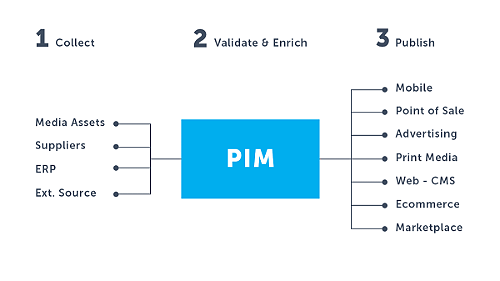
PIM in general
There are many PIM solutions on the market spanding from ones with a narrow range of functionality to ones with a broad range of functionality. In general, the tasks you typically will be able to perform with a PIM are:
- Manage and edit product details (pictures, information)
- Create product groups / categorize products
- Give / change product and product group attributes
- Differentiate product information for your channel distribution
- Translate product information for international distribution
- Create digital sales books and printed material
- Link directly to Adobe programs
In some cases, there is only data exchange from ERP to PIM, while others offer closer integration and data exchange in both directions between the two systems.
What Is TRIMIT PIR
The web-based TRIMIT PIR is a common repository that lets you manage the same types of product information as in a PIM.
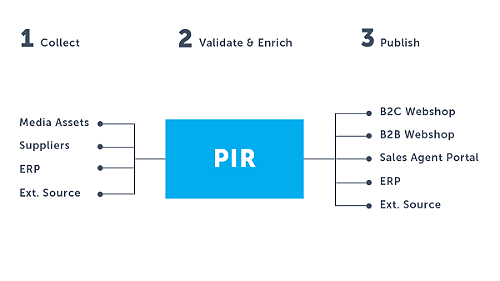
TRIMIT PIR
TRIMIT PIR is a part of the Dynamics NAV-based TRIMIT solution, meaning that it integrates directly to the ERP source data. This integration allows for data exchange in both directions between the PIR and the ERP.
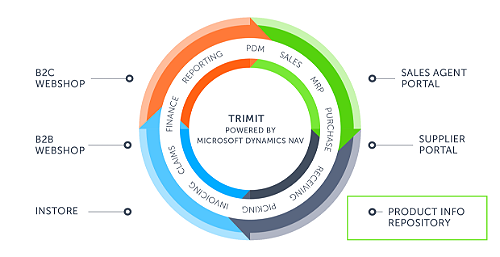
PIR integrated in the TRIMIT solution
For our customers, the single software solution lets them save time and resources since data is automatically updated in the entire solution.
With the PIR, they no longer need to:
- Upload the same collection of images to two or more webshops and portals
- Import product data from an ERP
- Update product information in two or more systems
Seamless Integration With Dynamics NAV
As shown in the two pictures below, users can go directly from the PIR to information about e.g. product information or supplier information in Dynamics NAV just by clicking a single link.
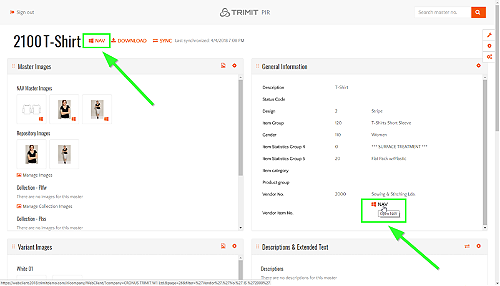
Data shown in TRIMIT PIR
Links in the TRIMIT PIR can open Dynamics NAV. Here is an example of supplier information opened from PIR.
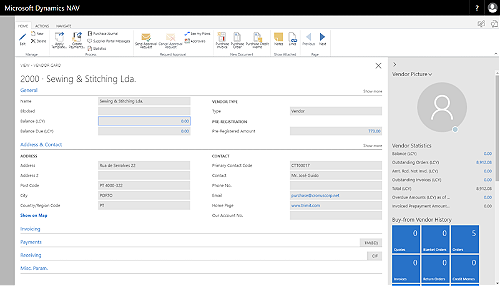
Data shown in Dynamics NAV
Key Differences between PIM and PIR
While there are some differences in the amount of functionality offered in PIM solutions, the core functionality of handling product information in a PIM and TRIMIT PIR is very similar.
There are two areas that we see as key differences between a PIM and the PIR:
#1 Catalog Structures & Design Tools
Compared to a PIM, the PIR currently does not support:
- Catalog structure for print catalogs, web catalogs, email campaigns etc.
- Integration with InDesign or other design tools
#2 Single Solution vs Integration Project
The PIR is built as a part of the NAV-based TRIMIT solution. These two work together as a single solution, so compared to a PIM there is no need for an integration project.
TRIMIT's single solution approach also means that, some of the handling of product information, which can be found in some PIMs, is partially handled in the NAV part of the TRIMIT solution:
- Workflows and assigments
- Categorization (Product categorization in multiple structures for different markets, channels, and customers)
- Differentiation of product information for different channels (Different output formats and interfaces)
More Info
For more information about the TRIMIT solutions please see the page Solutions. For questions or a free demo, please contact us at [email protected].